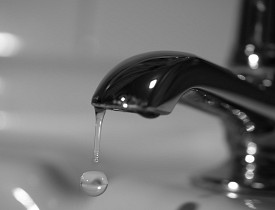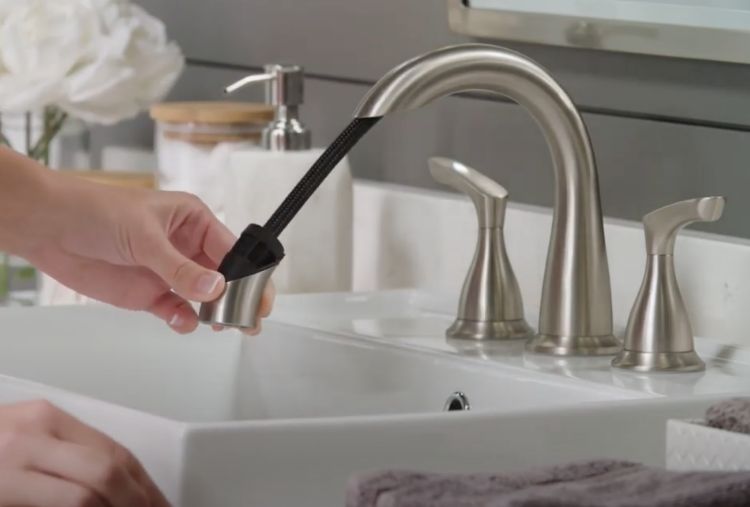Uncovering the Significance of Fixing a Leaking Faucet
Uncovering the Significance of Fixing a Leaking Faucet
Blog Article
How do you feel about Should I Repair or Replace a Leaky Faucet??

Leaking taps might feel like a small inconvenience, however their impact goes beyond just the aggravation of the noise. From wasting water to incurring unneeded financial expenses and health and wellness risks, disregarding a trickling faucet can result in various repercussions. In this article, we'll explore why it's important to resolve this typical family concern immediately and properly.
Wastage of Water
Environmental Impact
Trickling faucets add considerably to water wastage. According to the Epa (EPA), a solitary tap trickling at one drip per second can throw away more than 3,000 gallons of water annually. This not just pressures water resources but likewise affects ecological communities and wildlife dependent on them.
Step-by-Step Overview to Taking Care Of a Dripping Tap
Tools Called for
Before trying to repair a leaking tap, collect the required tools, consisting of a flexible wrench, screwdrivers, substitute components (such as washers or cartridges), and plumber's tape.
Typical Tap Issues and Their Solutions
Determine the sort of faucet and the specific issue causing the drip. Typical troubles consist of damaged washing machines, rusty shutoff seats, or malfunctioning O-rings. Describe maker instructions or on the internet tutorials for step-by-step assistance on repair services.
Financial Prices
Increased Water Costs
Past the ecological effect, dripping faucets can blow up water costs considerably. The gathered waste in time translates into greater utility expenses, which can have been prevented with prompt repair services.
Prospective Property Damages
Furthermore, long term trickling can lead to damage to components and surfaces surrounding the tap. Water buildup can cause staining, rust, and also architectural issues if left neglected, leading to added repair expenses.
Wellness Problems
Mold And Mildew and Mold Development
The continuous visibility of dampness from a trickling tap creates a suitable setting for mold and mildew and mildew growth. These fungis not only jeopardize interior air quality however likewise present health and wellness dangers, especially for people with breathing conditions or allergic reactions.
Waterborne Illness
Stationary water in dripping taps can come to be a breeding ground for bacteria and other pathogens, enhancing the risk of waterborne conditions. Pollutants such as Legionella germs flourish in stagnant water, possibly bring about serious health problems when consumed or inhaled.
Do it yourself vs. Expert Repair work
Advantages and disadvantages of DIY Fixing
While some may try to take care of a dripping tap themselves, DIY repairs include their own collection of challenges. Without proper expertise and tools, do it yourself attempts can worsen the issue or cause incomplete repairs, extending the trouble.
Benefits of Employing a Specialist Plumber
Hiring an expert plumber makes sure that the underlying cause of the dripping faucet is attended to properly. Plumbing technicians have the know-how and tools to detect and fix tap concerns successfully, conserving time and decreasing the threat of more damages.
Environmental Duty
Private Contribution to Conservation
Taking responsibility for dealing with trickling taps straightens with more comprehensive initiatives toward water conservation and environmental sustainability. Every individual's activities jointly make a considerable influence on maintaining priceless sources.
Lasting Living Practices
By focusing on timely repair services and embracing water-saving routines, people contribute to sustainable living techniques that profit both present and future generations.
Preventive Measures
Regular Upkeep Tips
To avoid dripping taps, carry out routine upkeep such as cleaning aerators, evaluating for leakages, and changing damaged parts promptly. Furthermore, take into consideration mounting water-saving tools or upgrading to extra effective components.
Value of Prompt Fixes
Dealing with trickling faucets as quickly as they're noticed stops more water wastage and prospective damages, inevitably conserving both water and money in the future.
Impact on Building Value
Perception of Well-Maintained Home
Preserving a building in good condition, consisting of addressing upkeep problems like trickling taps, enhances its perceived worth and worth amongst prospective purchasers or renters.
Influence on Resale Worth
Properties with properly maintained plumbing components, including faucets, command greater resale values in the real estate market. Resolving leaking faucets can add to a positive impression throughout home inspections and settlements.
Conclusion
Dealing with a trickling faucet exceeds plain comfort; it's an important action toward saving water, decreasing economic prices, and guarding wellness and property. Whether via do it yourself fixings or expert support, taking action to deal with trickling faucets is a little yet impactful method to promote liable stewardship of resources and add to a much healthier, a lot more sustainable future.
How to Fix a Leaky Faucet: Step-by-Step Repair Guide
A leaky faucet may seem like a simple annoyance, but if it's not fixed promptly, that leak could cost hundreds to potentially thousands. From water damage to mold, mildew, and high water bills, even a tiny leak can be catastrophic if left unattended. Damage like this can even affect the overall value of your home, so it's important to take the right approach for leaky faucet repair. You may need the help of a plumber in some cases, but we've got a few tips you can try on how to fix a leaky faucet before calling the pros.
Four Faucet Types
When you're learning how to fix a leaky faucet, the first step is knowing what kind of faucet you're working with! There are four common types.
Cartridge Faucets
Cartridge faucets come in one- or two-handled varieties. In one-handled cartridge faucets, hot and cold water combines in a single cartridge. In the two-handled versions, hot and cold water are controlled separately and mixed in the faucet.
Ball Faucets
Ball faucets have a single lever you push up and down to adjust the pressure and rotate to change the temperature. A slotted metal ball controls the amount of water allowed into the spout.
Compression Washer Faucets
They're the oldest type of faucet, but they're still used in many homes — especially older ones. Compression faucets have two separate handles that, when turned, raise or lower the washer that seals a water valve. This valve stops water from flowing through the faucet when it is turned off.
Disc Faucets
Disc faucets rarely need to be repaired due to their maintenance-free design. The water flow is controlled by two discs — the upper one raises and lowers against a fixed lower disc, creating a watertight seal. If your disc faucet starts leaking, you may need to replace the seals or clean residue buildup from the inlets.
Fixing a Leaky Faucet
Step 1: Turn Off the Water
Whether you're learning how to fix a leaky bathtub faucet or how to fix a leaky kitchen faucet, always turn off the water supply to your working area when you're fixing a leak. The last thing you want is a flood added to your list of things to fix.
Look for the shutoff valves below your sink or around the tub and turn them clockwise to stop the water flow. If your faucet doesn't have shutoff valves, you may need to turn off the water for the whole house. Check to make sure it's off by turning the faucet on. If nothing comes out, you're ready to start the repair.
Step 2: Take Apart the Faucet
How you disassemble your faucet depends on the type of fixture you have. You can use a flathead screwdriver to remove the caps on top of the handle or handles for cartridge and compression faucets. Inside, you should see handle screws. Unscrew these with a screwdriver to remove the handle.
Disc- and ball-style faucets will typically have an inlet screw near the handle, and removing that will reveal the interior of the faucet.
Detach the Valve Stem
For cartridge- and compression-style faucets, you'll see the inner valve stem or cartridge once you remove the faucet handles. If you have a compression faucet, unscrew the brass valve stem. If you have a cartridge faucet, pull out the cartridge. If your cartridge has been in place for a while, it may require some tools or extra force to remove it due to mineral deposits.
Examine and Replace Parts
Once you've removed the parts, check them out to confirm what needs to be replaced. You may see corroded rubber washers, O-rings, stems, or cartridges. On a ball-style faucet, check the seats and springs for damage.
If you need to repair a leaky disc faucet, check the inlet and seals on the lower disc.
Once you determine what parts must be replaced, visit your local hardware store. Bring the damaged parts with you to ensure you can purchase the correct components to replace them.
Clean Valves and Faucet Cavity
If you've removed a stem or cartridge, you may notice mineral buildup in the faucet's threads. Use white vinegar to clean the valve seat by soaking it for a few minutes, then scrub it away with a soft toothbrush and rinse with warm water. You can also clean the interior of the faucet in the same way.
Reassemble the Faucet
Once your faucet is cleaned and the required parts have been replaced, it's time to reassemble it. Put the pieces back together and slowly turn the water supply back on. Doing this slowly is crucial because too much initial water pressure can damage the new hardware you've just installed.
https://homewarranty.firstam.com/blog/how-to-fix-leaky-faucet

I recently found that blog entry about Should I Repair or Replace a Leaky Faucet? when doing a lookup on the search engines. In case you enjoyed reading our article plz be sure to share it. Thank you for being here. Revisit us soon.
Report this page